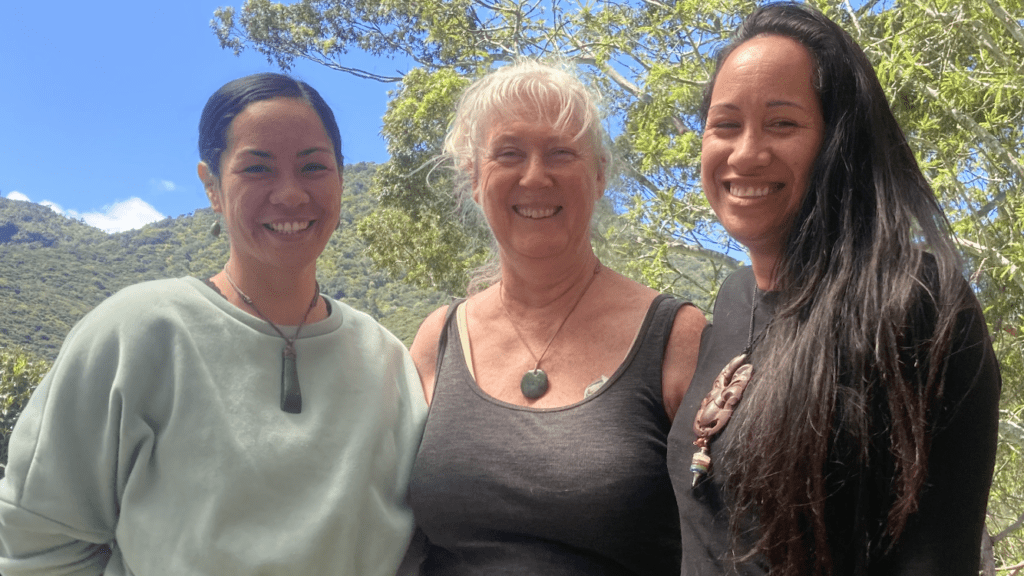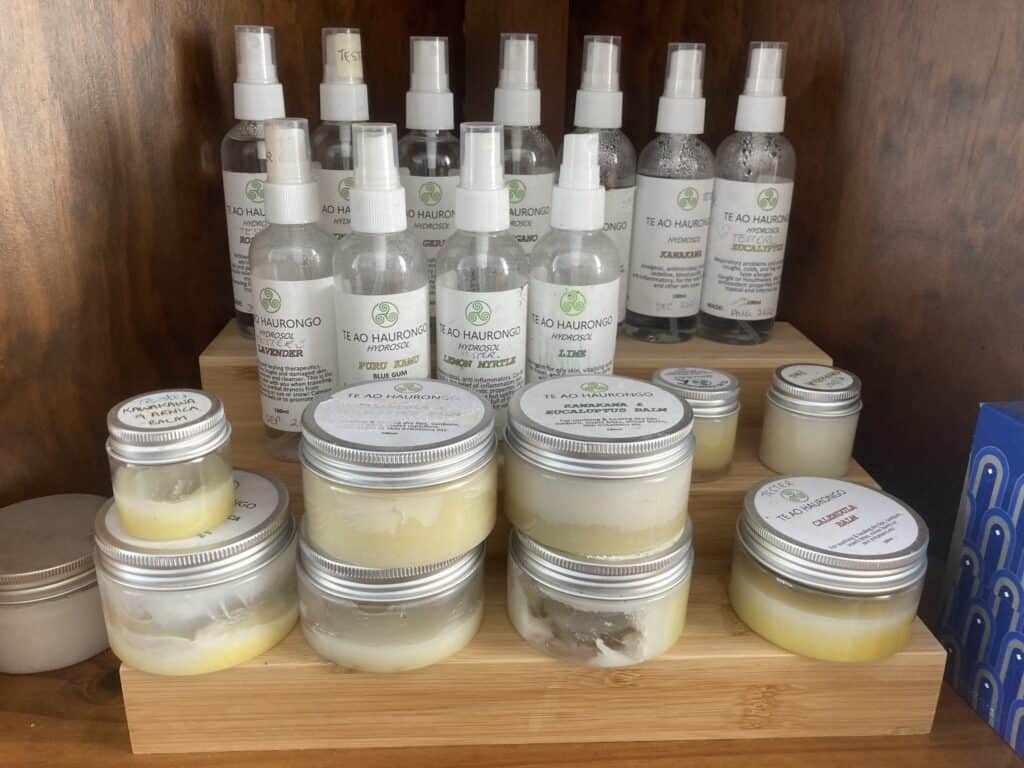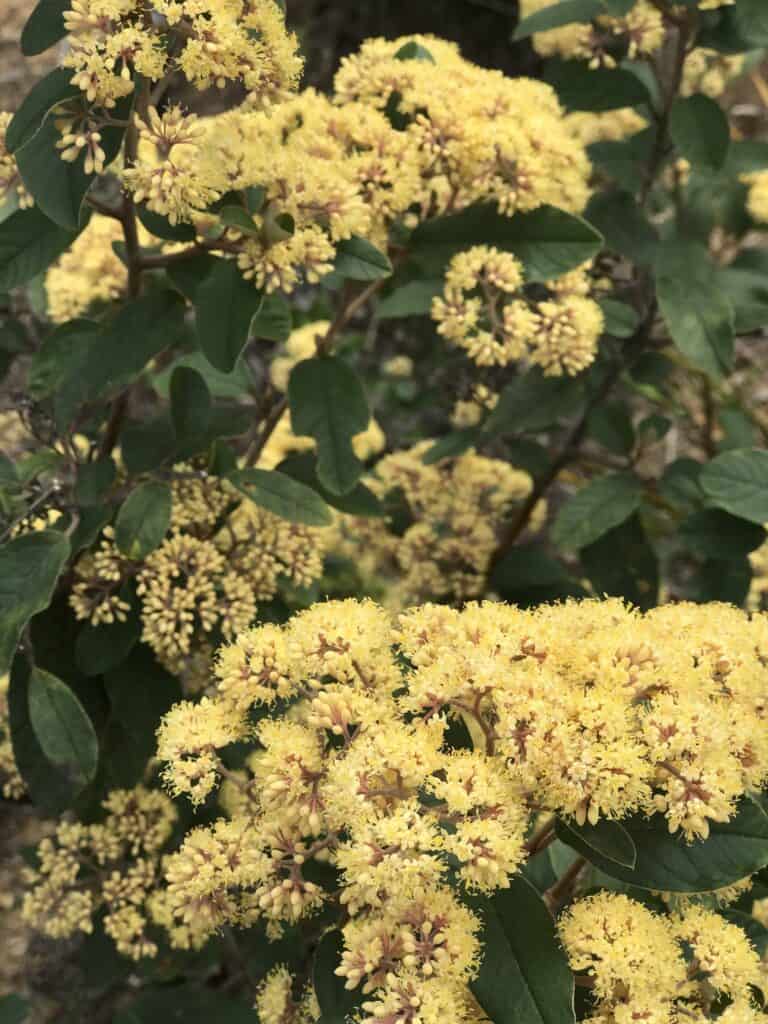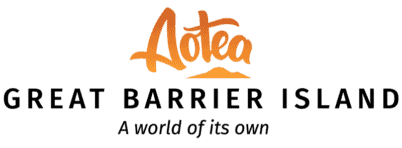
Aotea rongoā practioner Phoebe Ngawaka, herbalist Fleur Winger and pou for Te Ao Haurongo Char Ngawaka
Visitors drawn to the Te Ao Haurongo product display at community market days are tapping into deep island spirit.
“It is because of bloodlines,” says Char Ngawaka, “we go back 900 years. Our veins are made of the salt that surrounds this island.”
She is one of three women drawn together to share their knowledge and healing craft with others.
Phoebe Ngawaka grew up – like many whānau on the island – as a Latter-Day Saint, with prayer and reverence for life. “At high school I embraced my Māori side” and she has since gone on to complete a Diploma in Rongoā at Te Wānanga o Aotearoa.
The pair – “two of 37 first cousins, that we know of” – met Fleur Winger at Orama Oasis “when we were little” and Fleur was working as hospitality manager at the Christian community in the north of the island.
Several years ago, when Fleur was suffering acute pain in her knee, they were able to provide relief by wrapping it in kawakawa leaves, a form of Māori medicine or rongoā learned from their aunties.
“The girls taught me the spirituality of plants,” Fleur says, leading to the fusion of Western herbalism and Māori rongoā now embodied in their work together.
Fleur has a Certificate in Herbal Medicine, and it is at her home above Tryphena that “cooking” happens, the distillation of essential oils and hydrosols from plants. Everything is done according to tikanga, such as careful separation from the preparation of food.
Phoebe leads on the harvesting side, working with te maramataka, the Māori lunar calendar, to pick in season and with the full moon. She says she tunes in to the ways plants like kawakawa, kumarahou, mānuka and tī kōuka (cabbage tree) signal they are ready for picking and works with takutaku (incantation), karakia and waiata.
Phoebe and Char have a sense of being ambassadors for their families – “like Aunty Noelene, wonderful people who cared for those with aches and pain and flu symptoms” using knowledge passed down through generations.
On one of their first visits to Fleur’s house, watching as their harvest was transformed through a low heat steam distillation process, “we were celebrating as if we’d won lottery, there was magic happening.”
Fleur says the fusion of spirituality that guides their work is based on an understanding that God is in everything, and the healing essence of plants can speak to the healing potential within people.
They create a range of products, mainly hydrosols, made from rongoā plants, as well as infusions of Damascus rose, lavender, lemon myrtle, eucalyptus, and geranium. Their Winter Blend hydrosol is the most popular item, and they make balms with locally sourced bees wax, soaps, and shampoos.

Char is the connector, or the pou, for the team. Her natural empathy enables her to interact easily with visitors to their stand at market days and sense what they are looking for.
The Te Ao Haurongo business model is still developing and will involve a mix of product sales and one-on-one consultations, drawing on Fleur’s herbalism and Phoebe’s massage therapy. Now a customer list created by word of mouth and a Facebook page – www.facebook.com/TeAoHaurongo – are driving growth.
The trio see themselves as part of a community of practice on the island and will refer customers on to “other beautiful products and producers”, some of whom set up shop alongside them at the Claris Sports Club market.
Like Kaitoke Wilds, a locally harvested and produced skincare range by Felicitas Weisbach; island active honeys by Nikki Watts; Danni Blackwell’s natural skincare and other Farmed & Foraged products; and the Aotea range of rongoā-inspired therapeutic skincare products being produced at a much larger scale for sale in Auckland’s Commercial Bay and overseas markets by their cousin Tama Toki.
“We work with plants that have some of the most powerful medicinal properties in Aotearoa, says Phoebe.”
“It’s about connecting with people who have healthcare needs and supporting them to become well in ways that are true to this island.”

Written by Tim Higham, with the support of Destination Great Barrier Island.

